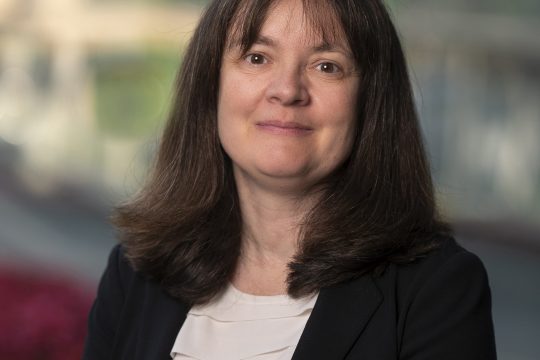The Egeblad lab studies the contributions of the tumor microenvironment – in which cancer cells arise and live – to therapy responses and metastasis. Solid tumors are abnormally organized tissues that contain not only cancer cells, but also various...
We study the molecular mechanisms underlying a variety of nucleic acid transactions, including DNA transposition, RNA synthesis and RNA processing. The current research focus of my laboratory is to understand the molecular underpinnings and biological significance of complex virus-host...
Redox regulation plays a central role in signal transduction processes operating in the brain. Aberrant redox signaling is a hallmark of several neurodegenerative diseases such as Alzheimer’s disease, Huntington’s disease, Parkinson’s disease, Amyotrophic Lateral Sclerosis and various Ataxias. It...
My laboratory has taken a multidisciplinary approach to understand the cellular and molecular mechanisms of different types of somatosensations including pain and itch, which are initiated and mediated by primary sensory neurons in dorsal root ganglia (DRG). We identified...
Research in the Retrovirus Laboratory focuses on the molecular virology and pathogenesis of lentivirus infections. In particular, the simian immunodeficiency virus (SIV) is used to examine the molecular basis for the pathogenesis of HIV CNS disease. Research projects include...
A fundamental property of living cells is their extraordinary ability to sense and respond to a changing environment. In higher eukaryotes, malfunctioning of signaling networks has many devastating consequences such as cancer, diabetes or autoimmunity. Such consequences arise from...
Our work bridges from biochemical to preclinical translational studies to harness the power of glycobiology for therapeutic benefits. All cells are endowed with a diverse coat of glycans, their “glycocalyx,” which represents the face of the cell to the...
Our laboratory is interested in the molecular mechanisms and physiological roles of mitochondrial fusion. Mitochondria are highly dynamic and control their morphology by a balance of fusion and fission. The regulation of membrane fusion and fission generates a striking...
For the 34 million people infected with HIV-1, the best current hope for avoiding the fatal consequences of the infection lies in treatment with antiretroviral therapy (ART), which consists of combinations of three drugs that inhibit specific steps in...










